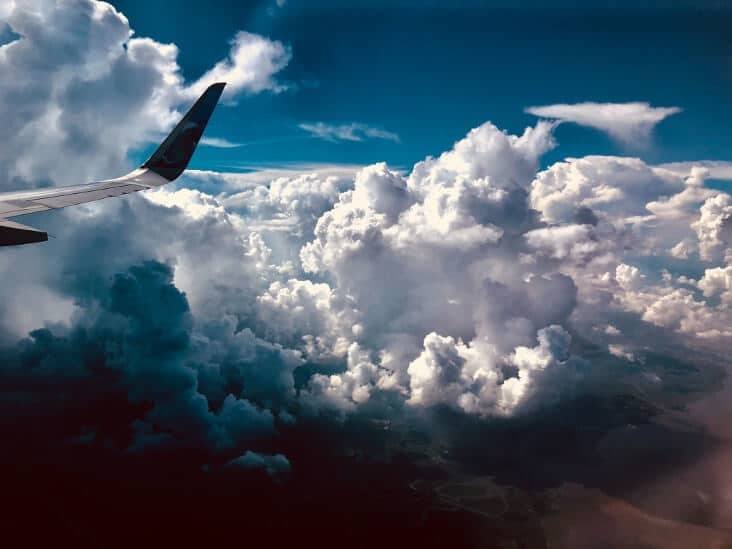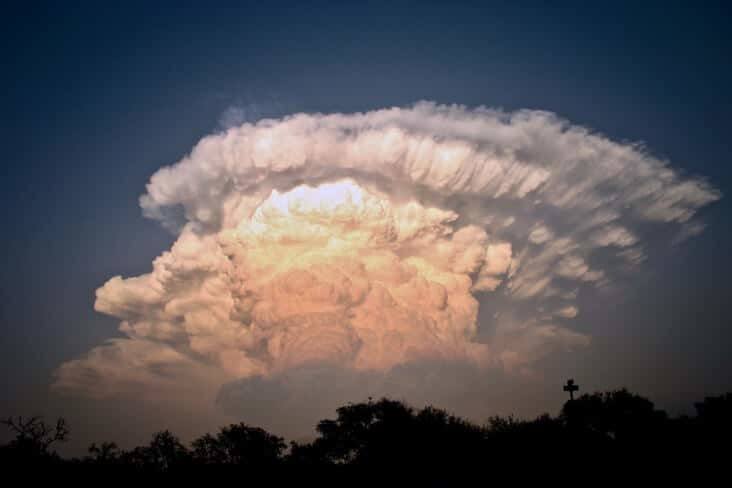Many passengers embark on a plane with a low feeling as soon as the wind blows a little stronger. Then many assume that it will shake very much and the plane may crash.
But if you explain to them why it is wiggling and how the plane deals with it, this bounce feeling often goes away.
Are there any air holes?
Many people always talk about air holes. In space there are black holes where there is not even light. But on earth and in our whole atmosphere, there are no holes like in Swiss cheese.
If these holes are also responsible for making aircraft fall down, they would have to be very large for an airplane to fit in.
And what is the probability that a plane that flies at 900km/h would hit exactly this hole.
Should the air holes be round like a hole in a cheese slice? The most stable physical form is the sphere.
Therefore, moisture also forms a drop of water. A hole would be far too unstable physically. So there are no air holes.
Then why do you fall like a hole?
Each air hole can be explained quite simply. Responsible for this are irregularities in the air currents.
As a result, an airplane can lose a few meters in height even in the short term. But at 10km altitude, 10m altitude loss does not matter.
And yet, it feels like you're falling far.
But this does not matter much to the plane and it will continue to fly. Just because of a short-term loss of altitude, no aircraft will crash.

How do turbulence arise?
Turbulence is nothing more than irregularities of air currents.
Take a look at a highway. Each car drives at a different speed. This is exactly what currents in the air do.
On the highway, all cars drive in the same direction, but air currents can flow in different directions.
Now, if you fly from one current to the other, it will wobble, as the speed will change as you move from one to the next current.
If the flow direction changes, it will probably shake even more.
What are air currents?
You can imagine a current like an air package, like cars on the highway. There are large and small air packages.
You can imagine a lot of air molecules that occupy a certain space under one air package.
You can see some air packages too. Such air packages or air masses are clouds.
In clouds, you can also see the delimitation of the surrounding air mass very clearly.
Clouds Turbulence
Large air currents in our atmosphere flow horizontally over the earth's surface, with clouds often growing vertically upwards when warm moist air rises.
As a result, two air masses at different speeds move in different directions.
If an airplane flies through this cloud, it will wobble as the air flow around the wing is affected.

In doing so, the plane won't crash.
The change in speed from one air mass to the other is much lower, so the speed will change relatively little.
Nevertheless, it is precisely these changes and influencing the flow around the plane that you notice as a passenger.
Turbulence caused by thunderclouds
When the vertical velocity in a cloud is very large, because a lot of warm air rises, a thundercloud forms.
The small drops of water in the cloud cool down on their way up.
At some point, they freeze to small hailstones and can grow bigger and bigger. Sometimes they are as big as a tennis ball.
They are still carried upwards by the rising air. At some point, however, they are so heavy that the hailstones fall down again.
If they do not defrost completely on their way down, they fall on the earth as hailstones. Otherwise, it just rains.
With the hailstones, cold air also flows down again.
The danger of thunderclouds
In a thundercloud there are therefore large currents upwards and downwards.
There are very violent turbulence to be expected, which is why we do not fly into a cloud without checking with the weather radar to see if we can fly in there.
In addition, we don't want to collide with the big hailstones.
They'd only hit the front of the cockpit windows, which can withstand it. Nevertheless, they can seriously damage the discs.
As a passenger, you won't get any of it. Sometimes it can't be avoided and you have to fly through clouds.

Then we still try to avoid the center with the greatest danger.
If a plane still flies into the centre, it may be damaged somewhat by the hailstones.
However, it can usually continue to fly normally and land normally.
The problem of invisible turbulence
In addition to the visible air packages such as clouds, you usually see little of the currents in our atmosphere. But even these invisible currents cause turbulence.
Clear air turbulence
Clear air turbulence includes all turbulence that you cannot see because the air is clear and the current is invisible.
A current can arise somewhere on Earth.
For example, it arises when air is heated somewhere by the sun and this warm air rises.

When an air mass rises, the lateral air usually flows colder.
Thus, currents are created in the atmosphere, which can go around the whole earth.
Air currents around the Earth
So our atmosphere never stands still and the currents all have different speeds and directions.
Turbulence due to mountains
When large or small horizontal currents hit mountains or mountain ranges, they are an obstacle and the air must flow around them somewhere.
Then the speed of the flow changes. But that doesn't happen evenly.
The speed changes in the heights, in front, above and behind the obstacle. Because the air must flow around or over the mountain or mountain range.
As a result, the air accumulates in front of it and is accelerated above the obstacle. Behind it, the speed becomes less again and vertebrae form.
Extensive turbulence - Mountainwaves
The turbulence behind it is also called mountain waves. You can cause turbulence hundreds of miles behind the obstacle.

We can't see such turbulence. But the next time you fly near a mountain in a stronger wind and it wobbles, then with a high probability the turbulence will come from the mountain.
Jetstream
In aviation, you will also often hear about Jetstream.
A jet stream is nothing more than an air flow that has a certain velocity.
It usually reaches at a high altitude over a large part of the earth's surface.
How big is such a jet stream?
The jet stream is the highway in the air, so to speak.
If the wind comes from behind, planes reach their destination even faster.
Therefore, pilots deliberately fly into these special currents.
Even if a jet stream can have several hundred meters in diameter, you have to fly in there first.
The air in the jet flows very fast, but the air around it is slower.
Turn to the fast lane
When flying in and out into a jet stream, speed changes occur again.
So it wobbles again when you fly in or out of a jet stream.
A jet stream can reach a flow speed of several hundred km/h.
This means that the speed changes when flying in and out into the jet can be slightly larger.
But here, too, there is no reason to be disturbed. Because you're very high up. Even if a plane falls several meters down.
How do you recognize the strength of turbulence on the coffee mug?
There are the categories light, moderate, and heavy.

With light turbulence, it's a little wiggling. The coffee in the cup moves a bit, but it still remains in the cup.
With moderate turbulence, it is already much more wiggling. Then the coffee can also soaking out of the coffee mug.
With Heavy Turbulence, the mug will no longer stand on the table. These turbulence must be avoided in any case.
Nevertheless, they happen from time to time.
These turbulence do little to the aircraft, although the aircraft also has its load limits.
But for passengers, turbulence is much more unpleasant and the limits are reached much faster than those of the aircraft.
Where should you sit so that it doesn't wobble?
Depending on where you are sitting on the plane, you notice the turbulence of varying degrees.
In a plane, you feel the turbulence in the front less than in the back.
If it can still be comfortable in the front, the coffee cups can fly in the back.
Therefore, if you are sensitive to turbulence, it is best to choose a seat on the plane far ahead.
Conclusion!
As you can see, there are very simple explanations for the turbulence.
Changes in speed and flow direction around the wing profile are always responsible for the wobbling.
The changes in speed and flow direction can be caused by several reasons.
Clouds, mountains or invisible air currents can be the causes of this.
The turbulence is divided into three categories.
But basically, you notice the turbulence in a plane in the front less than in the back.
Was the site helpful to you?
Then share it with your friends! Because they should benefit from the content, too.


Interesting as always, congratulations Fabian.